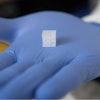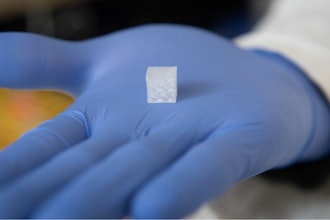
Chemical and biological (CB) threats have become increasingly ubiquitous and diverse, presenting significant risks to warfighters in theater and stability operators during pandemic outbreaks. State-of-the-art personal protective equipment (PPE) can be bulky, heavy, and cumbersome, often severely limiting user mobility and performance. The Personalized Protective Biosystem (PPB) program aims to develop technology that reduces the need for burdensome protective equipment while increasing individual protection against CB threats.
DARPA recently awarded contracts to the following performers, FLIR Systems, Leidos, and Charles River Analytics, to develop lightweight materials and adaptable, tissue-protective countermeasures to provide on-demand, broad spectrum, and rapid long-term protection. Performers will seek to leverage molecular technologies and commensal organisms to unburden protective equipment demands from the user.
“PPB aims to address PPE limitations, including threat-specific vulnerabilities, thermal/logistical burdens, and potential exposure risks,” noted Eric Van Gieson, PPB program manager. “The capability to provide unburdened CB protection will be invaluable in maximizing time on target, providing operational flexibility, extending mission duration, and enabling operations in austere environments, regardless of the threat.”
The five-year program is divided into two technical areas (TAs). TA1 technologies aim to prevent external contact between the threat and the body, providing 100% survival against more than 10 CB agents with smart, lightweight materials. TA2 technologies will neutralize threats at vulnerable internal tissue barriers (i.e. skin, airway, ocular) using a configurable countermeasure.
The PPB program team is collaborating with government and industry stakeholders – including the Joint Program Executive Office for Chemical, Biological, Radiological, and Nuclear Defense (JPEO-CBRND), Biomedical Advanced Research and Development Authority (BARDA), U.S. Center for Disease Control /National Personal Protective Technology Laboratory (NPPTL), and World Health Organization International (WHO) – to serve as potential transition partners.
“Successful PPB technologies have the potential to revolutionize how the military and public health communities perform in unpredictable threat environments, while also offering prophylactic and therapeutic solutions to known and emerging infectious diseases,” added Van Gieson.
DARPA’s PPB team and performers will be working with the U.S. Food and Drug Administration to ensure all relevant guidelines are adhered to and regulatory standards are met, with the expectation of Investigational New Drug (IND) approval by the conclusion of the program, for relevant components.
Additional information on the DARPA PPB program is available at: https://beta.sam.gov/opp/e0c727c98d564dc5ae48c9a099af9c34/view?index=opp&naics=51,54&page=3&psc=A,B,C,D.






















